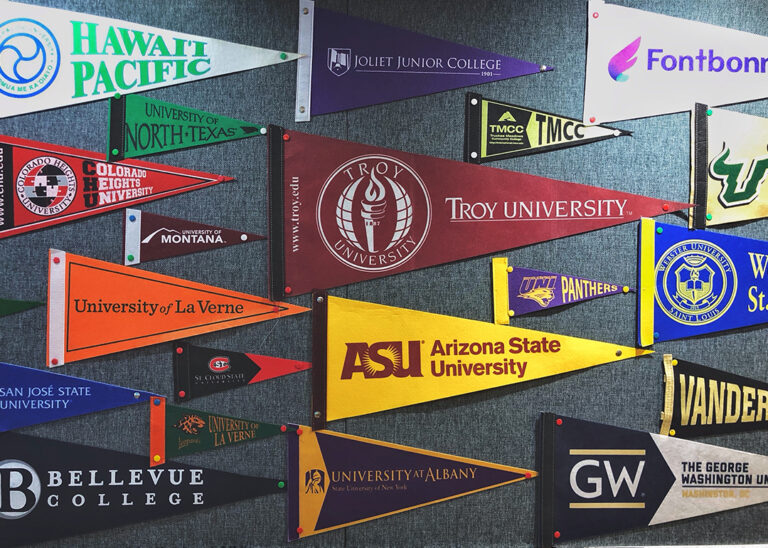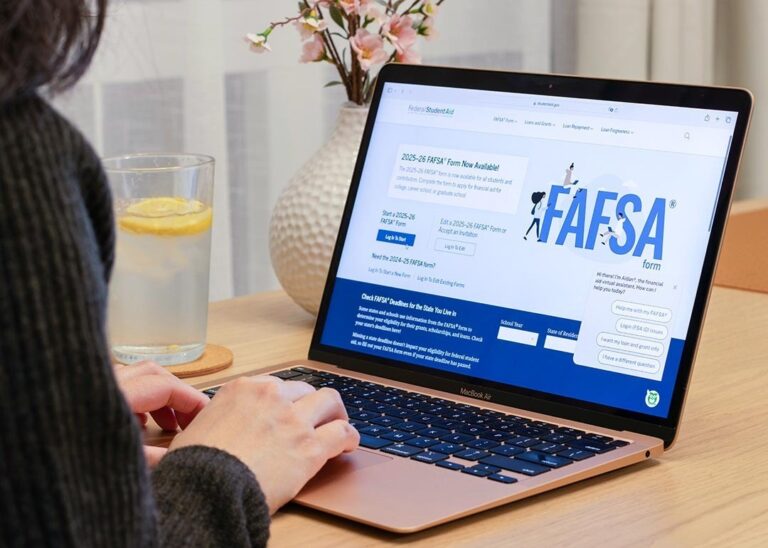Misinformation about financial aid myths can derail even the best college plans, leaving students and families confused or stuck with unnecessary debt. From FAFSA misconceptions to confusion over scholarships, these myths can cost you thousands.
In this guide, we’ll bust 10 common college financial aid myths, share financial aid facts, and give you practical strategies to maximize grants, scholarships, and work-study programs.
Whether you’re a teen prepping for college, a parent crunching numbers, or an adult learner balancing work and school, let’s clear up the confusion and help you fund your education.
Myth 1: You Need a Perfect GPA to Get Financial Aid
Think only straight-A students get financial aid? That’s a huge financial aid myth. Aid comes in two flavors: merit-based (like scholarships for academics or sports) and need-based (like Pell Grants, tied to your family’s finances).
The National Center for Education Statistics shows 86% of first-time college students get some aid, and most aren’t valedictorians.
Grades aren’t everything. Explore both aid types and apply widely. Platforms like Scholarship Institute can connect you with scholarships for your unique strengths, from music to leadership. And here’s the thing—plenty of scholarships don’t even ask for your GPA.
There’s something out there for almost everyone, but you won’t find it if you assume you’re not “good enough.” Whether you’re rocking a 4.0 or just trying to keep it above a 2.5, don’t count yourself out.
Myth 2: My Family Earns Too Much for Aid

I used to believe my parents’ steady jobs meant we wouldn’t qualify for aid. Boy, was I wrong. The FAFSA digs deeper than just income. It considers family size, number of kids in college, and even unexpected expenses like medical bills.
In 2023, families making $90,000 or more still qualified for aid, especially with multiple dependents. Skipping the FAFSA because you think you’re “too rich” is like tossing money out the window.
No matter your family’s income, submit the FAFSA. It’s your ticket to federal grants, loans, and school-specific aid.
And even if you don’t qualify for federal need-based grants, some schools use the FAFSA application to hand out their own institutional aid.
Myth 3: The FAFSA Is Too Complicated to Bother
FAFSA is not as scary as it sounds. The 2024–25 FAFSA cut down questions for most applicants, and the IRS Data Retrieval Tool auto-fills your tax info.
Plus, many high schools, colleges, and community centers offer free FAFSA workshops to walk you through it.
Don’t let your misconceptions stop you. Set aside a quiet evening, grab your financial docs, and get it done. If you’re still having trouble, there’s live FAFSA chat support, or you can swing by a local library or school event where volunteers walk you through it. You don’t have to figure it all out alone.
Myth 4: You Only Need to File the FAFSA Once
Some students think the FAFSA is a one-time thing. Nope! You have to refile every year because financial aid eligibility shifts with your family’s situation. A parent’s job loss, a new sibling in college, or even a big medical bill can boost your aid.
Mark October 1 on your calendar—that’s when the FAFSA opens.
Think of the FAFSA like a yearly check-in. Life changes, and so can your financial help. It’s one form, once a year, and it could mean thousands in extra support.
Myth 5: Financial Aid Covers All College Costs

Here’s a sneaky college financial aid myth: Aid pays for everything. Grants and scholarships often cover tuition, but what about dorms, textbooks, or living expenses?
The College Board estimates extras like books, transportation, and personal expenses can hit $1,300–$1,500 a year.
Plan for the full cost of college. Work-study jobs or small scholarships can cover gaps. Browse options at Scholarship Institute to tackle those hidden expenses.
Financial aid is a huge help, but it’s not a magic wand. Having a backup plan, like a part-time job or a few local scholarships, can make the difference between stressing over cash or just focusing on school.
Myth 6: Only Full-Time Students Qualify for Aid
Think part-time students are out of luck? Not at all. Pell Grants are available for part-time enrollment (adjusted based on credits), and many scholarships target nontraditional students like working parents, veterans, or those in certificate programs.
If you’re balancing work, family, or part-time school, aid is within reach.
Lots of aid programs are built with flexibility in mind. The system isn’t just for 18-year-olds fresh out of high school. Whether you’re taking one class or three, there’s likely something out there to help lighten the load.
Myth 7: Independent Students Get a Bigger Aid Package
Going “independent” for FAFSA doesn’t mean you’ll automatically score more aid. You need to meet strict criteria, like being 24+, married, a parent, or a veteran. If you qualify, only your income (and your spouse’s, if married) counts, not your parents’.
But aid still depends on your finances and the school’s costs. If you’re unsure, don’t guess. It’s way easier to get it right up front than to fix it later. Plus, some schools might ask for extra documentation, so knowing where you stand can save a ton of stress.
Myth 8: Scholarships Are Too Hard to Find
The idea that scholarships are impossible to track down is a stubborn financial aid myth. Yes, scams are out there; steer clear of anyone charging for “guaranteed” awards. Platforms like Scholarship Institute simplify the hunt by matching you with scholarships based on your profile, from academics to hobbies.
In 2023, students snagged over $7.5 billion in private scholarships, and the secret to accessing these funds is pure focus and even tenacity.
Start early and apply often. Sign up at Scholarship Institute for a vetted list of scholarships and tips to avoid scams.
And remember, you don’t have to be a straight-A student or class president to qualify. Some scholarships are as simple as writing a short essay, sharing a personal story, or even shooting a quick video.
Cast a wide net and don’t overthink it. You never know what might stick, and a few hundred bucks here and there can cover books, supplies, or just ease the pressure.
Myth 9: Private Colleges Are Always More Expensive

Private school tuition can look like a budget-buster, but financial aid facts tell a different story. Many private colleges have hefty endowments, offering generous aid packages that can make them cheaper than public schools.
For example, some small liberal arts colleges meet 100% of demonstrated need. There are numerous stories of students torn between a state school and a private college. After aid, the private school may cost less. Don’t judge by sticker price.
Myth 10: Applying for Aid Hurts Your Admission Odds
Ever worried that requesting aid makes you look “needy” to admissions offices? Most colleges, like Yale or the University of Michigan, use need-blind admissions, meaning aid applications don’t affect your chances.
Even at need-aware schools, strong applicants rarely get dinged for seeking aid.
Focus on nailing your essays and grades. Supplement your aid with scholarships for extra peace of mind.
Admissions teams aren’t sitting around penalizing people for needing help—they know college is expensive. In fact, schools often encourage students to apply for aid because it helps them award need-based resources more effectively.
More Myths to Squash
Here are a few other financial aid myths to kick to the curb:
- Aid is only for young students: Adult learners, returning students, and even grad students can access grants and scholarships.
- Your savings ruin your chances: The FAFSA weighs income more than assets, and retirement accounts or your primary home don’t count.
- All loans are a trap: Federal loans often have low rates and flexible repayment plans, unlike private loans. Get the truth about student loan myths at Scholarship Institute.
Tips to Maximize Your Financial Aid

Want to stretch your aid as far as possible? Here’s how:
- Jump on It Early: File the FAFSA as soon as it opens on October 1. Some grants and scholarships are first-come, first-served.
- Stay Organized: Keep tax forms, bank statements, and income records in one place for quick FAFSA filing. I use a labeled folder to avoid last-minute panic.
- Get Expert Help: Talk to school counselors, college aid offices, or use Scholarship Institute for tailored advice.
- Apply for Scholarships Monthly: Set a goal to submit 3–5 applications a month. Scholarship Institute’s platform makes it easy to find matches.
- Compare and Negotiate: Review aid offers side by side. If your finances change (say, a parent loses a job), appeal to colleges for more aid.
- Explore Work-Study: Part-time jobs, often on campus, can cover living expenses without derailing your education.
Last Words
Clearing up financial aid myths is the key to making college affordable. Don’t let FAFSA misconceptions or student loan myths keep you from chasing your degree.
File the FAFSA every year, hunt for scholarships, and lean on resources to build a smart financial plan.Ready to take the next step? Discover scholarship opportunities with Scholarship Institute and start funding your college journey today!
Our Editorial Team, with a rich background in educational content creation, prioritizes accuracy and quality in every article. We are committed to producing expert content tailored to meet the academic needs of college and high school students, ensuring they receive well-researched and trustworthy information for their educational journey.







